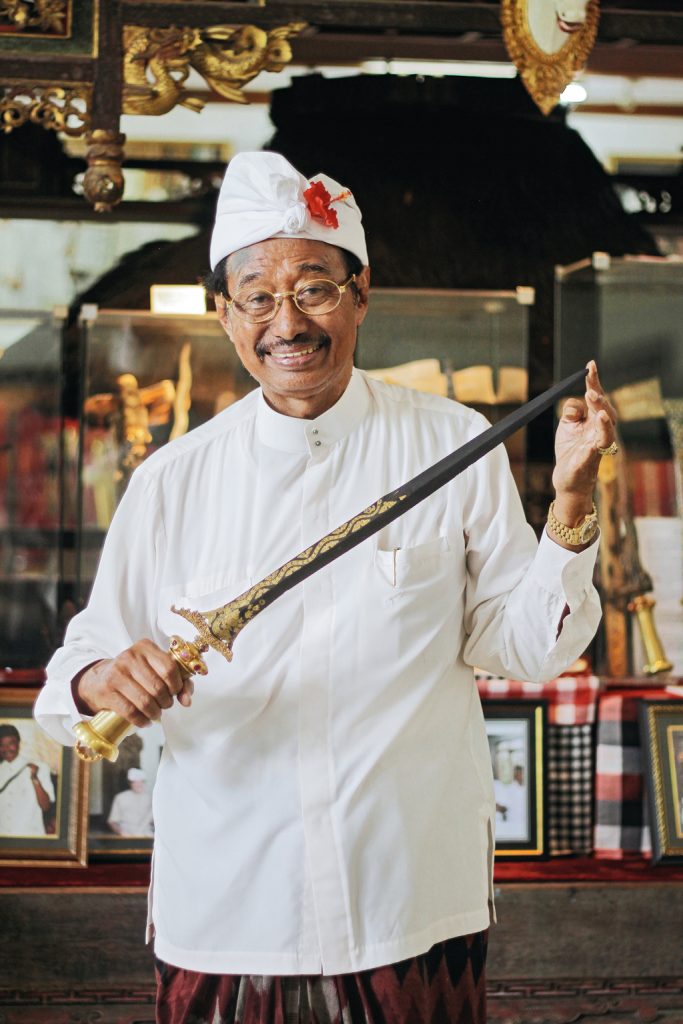“A museum means a lot more than just a tourist object. it is a place where culture is preserved, art is admired, history is appreciated, and local wisdom is promoted. It acts as a teacher, a learning space, a world of information, and an inspiration.” Pande Wayan Suteja Neka (founder of NEKA Art Museum)
The rice fields may be slowly disappearing, but Bali’s culture remains. For centuries now, the Balinese have followed a unique form of Hinduism. The religion is the major influence behind the island’s rich and vibrant culture, making it one of the most diverse in the world. Music, dances, costumes and theatrical performances are a feast for the senses during ceremonies and temple festivals.
 Suteja Neka Photo by Fauzi Rizal
Suteja Neka Photo by Fauzi Rizal
Both the Bali Hinduism and the culture also influence the arts. “What we have in Bali cannot be found anywhere else in the world. Art and culture are inseparable from the daily life and way of living of the Balinese people. We manage to assemble many people all dressed up beautifully in their traditional outfits; the ladies taking care of the offerings and the men working together carrying the deceased that is placed inside beautifully handcrafted containers, parading on the road with live traditional music playing on the background. It’s so grand and colossal, and it looks like a staged performance. It’s not a show, though everyone is welcome to observe. It’s just the way the Balinese people perform a cremation,” Neka said.
From birth to death, the Balinese have their own unique ways in celebrating the life cycle through a series of rituals and ceremonies. “Quite a number of western people told me about how special Balinese culture is, and that the Balinese culture and arts are some of the most unique and stunning they have ever seen. We as the Balinese people don’t think that it’s special; it’s just the way we live.”
The world is mesmerised by the Balinese arts and culture; and as someone who used to be a teacher, Neka wishes to preserve the unique arts and culture of Bali, and pass them down for generations to come. This is why he founded NEKA Art Museum. “I want the museum to serve as an encyclopaedia for anyone who wants to know more about the arts and culture and Bali, and also Indonesia in general through the works of arts displayed there. A museum also acts as a reminder that Bali is not only for the Balinese. The island is one of the most popular destinations in the world, and is home to people of different cultural backgrounds and nationalities including famous artists such as the late Walter Spies, Rudolf Bonnet, and Arie Smith. These artists helped develop several artistic styles and movements on the island while promoting Bali in the international world through their great paintings.”
Neka’s devotion to arts extends beyond the Island of the Gods. “Indonesia is home to brilliant art and they are so diverse. The Indonesian keris dagger for instance, has been recognised by UNESCO as a “Masterpiece of the Oral and Intangible Heritage of Humanity”. As homage to the Indonesian keris craftsmen, I’ve devoted a room in the Neka Art Museum to exhibit more than 300 of the finest Indonesian keris – 27 of them with very high historical values, and 100 of which are ancient.”
For his effort in the preservation of culture and art, Neka has received numerous awards and prestigious recognitions such as the “Lifetime Achievement Award” from the Museum Awards 2014, “Certification of Appreciation” from the Minister of Tourism and Creative Economy, a “Heritage Award” from Pacific-Asia Travel Association (PATA), and many more.
Get in touch with Nyoman Pande Suteja Neka through NEKA Art Museum in Ubud.







